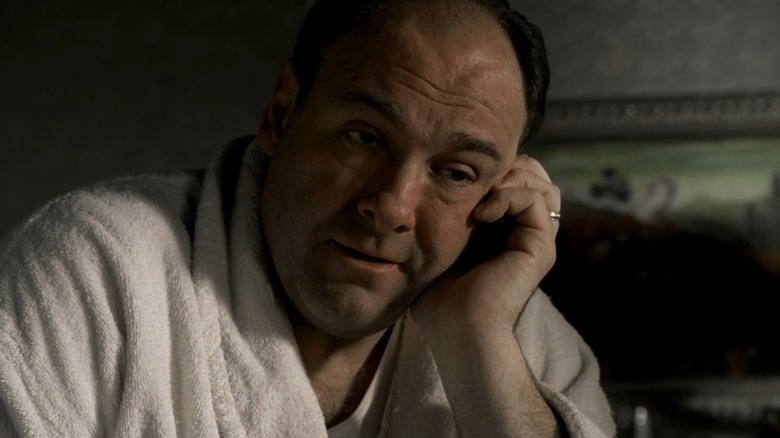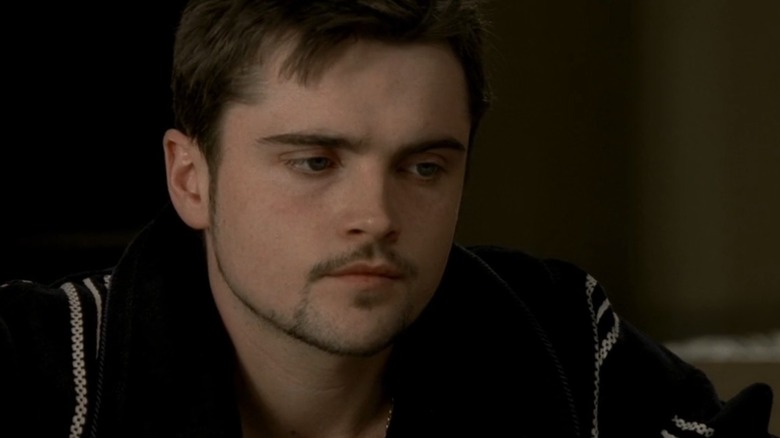HBO
Even after seventeen years since its first broadcast on HBO, the final episode of “The Sopranos” continues to leave viewers in awe. The audacious decision by David Chase to conclude one of the greatest television series ever with an abrupt, ambiguous fade to black remains a daring and startling move, despite many other TV dramas having come and gone since then.
In the recently released two-part HBO documentary titled “Wise Guy: David Chase and the Sopranos,” the creator of the series, along with the writers, executive producers, and occasional directors, open up about the inception and conclusion of the show. The remaining cast and crew members also share their experiences, with many expressing their initial shock at the unexpected ending of the show. Michael Imperioli, an actor on the show, described the ending as “sudden and strange,” while his co-star Drea de Matteo admitted to checking if her TV had malfunctioned. Lorraine Bracco, who portrayed the character of psychiatrist Dr. Melfi on the show, revealed that James Gandolfini, the late actor who played Tony Soprano, was also taken aback by the ending.
Bracco, in her interviews, confirmed that Gandolfini, the lead actor, was not informed about the fate of his character, Tony, or about the ambiguity that surrounded it, prior to the airing of the episode. She recollected Gandolfini’s reaction after watching the episode, “Jim said, ‘That’s it? That’s it?’ He was incredulous.” When asked about Gandolfini’s reaction, specifically if he was “angry,” Bracco clarified that it wasn’t a reaction of anger. Instead, she believes, “He was as shocked as everyone else.”
The Tony Soprano actor was in shock

HBO
Gandolfini was just the first in a long line of people who would be left in shock. On June 26, 2007, nearly 12 million people tuned in to watch the conclusion of Tony’s story, only to find out that Chase had no intention of revealing it. Instead, he chose to end the series with a scene that was simultaneously tense and ordinary. In this scene, Tony meets his wife Carmela (played by Edie Falco) and son A.J. (portrayed by Robert Iler) at a diner, with his daughter Meadow (played by Jamie-Lynn Sigler) on her way to join them. Despite not being on high alert, Tony scrutinizes every individual who walks through the door, given his numerous enemies, some of whom had been trying to eliminate him throughout the season. A suspicious-looking man in a Members Only jacket heads to the bathroom, and two Black men, typically the demographic hired by the show’s mobsters for a setup, enter the diner. All this happens while “Don’t Stop Believin'” plays in the background. Then, the show abruptly fades to black. The end.
The conclusion left not just the long-time fans, but also the cast of the show, perplexed, as per “Wise Guy.” Many viewers, including de Matteo, were under the impression that their TVs had malfunctioned. De Matteo further added, “I’m thinking to myself, ‘This is David. This is f—ing David. This is exactly how he wanted to end the show. He doesn’t want anyone to know what’s going on right now.'” The most surprising revelation here is that Gandolfini apparently wasn’t privy to the secret before the scripts were finalized. However, considering the numerous on-set tensions described in the documentary, including Gandolfini’s personal struggles and his constant desire to leave the show, Chase’s gloomy taskmaster attitude, and issues with press leaks, it seems plausible that everyone involved would be kept in the dark for as long as possible.
David Chase also dropped some hints about how the cut to black came to be

HBO
The mystery continued even after the conclusion of the show. Chase refrained from providing any clues about his intentions with the finale for many years, leading fans to formulate their own theories about what must have happened. Eventually, in Matt Zoller Seitz and Alan Sepinwall’s 2019 book “The Sopranos Sessions,” Chase compared the ending to a “death scene.” He later revealed to The Hollywood Reporter that he had initially planned to have Tony killed in a mob confrontation, but decided to change the ending to a diner setting.
In “Wise Guy,” Chase continues to maintain some secrecy around the scene, but also provides more insight into his thought process. He mentions drawing inspiration from a Journey lyric (“the movie never ends/It goes on and on and on and on”) and a random line from an earlier season in which A.J. Soprano speculates that black symbolizes death. For once, A.J. was correct: the fade to black symbolized death approaching Tony, as sudden and unexpected as it could be for anyone. Nearly two decades later, it’s all starting to make sense. However, it’s amusing to know that at the time, the unexpected ending was as much a shock for James Gandolfini as it was for the rest of us.
Credit: www.slashfilm.com


